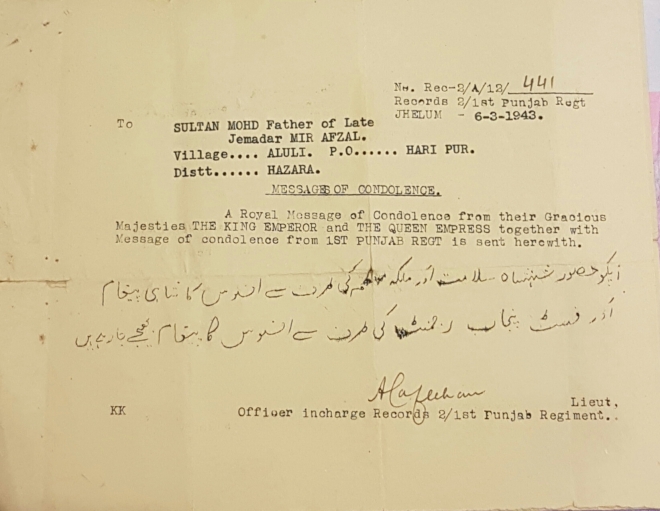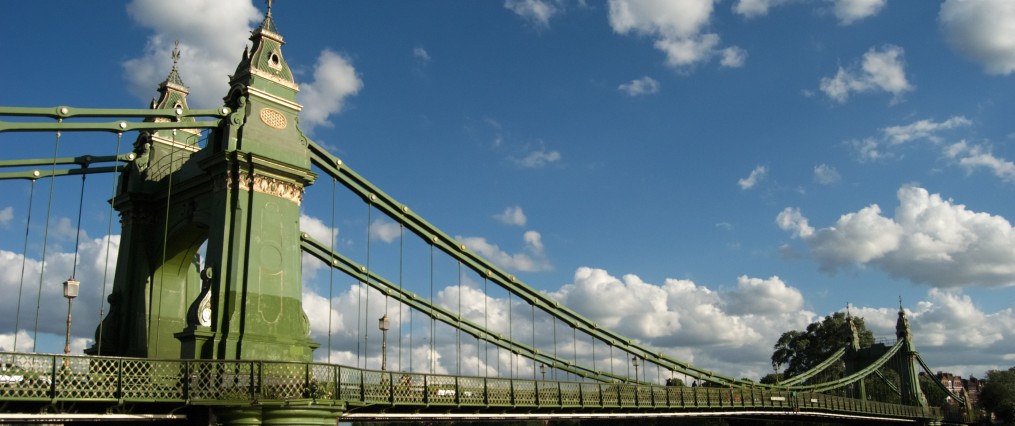 A guest post from Mark Higton.
A guest post from Mark Higton.
Last week I wrote about the Church of St Katherine, Westway, and how it’s cross, salvaged from the broken and twisted steel superstructure of St Catherine Conway, provides a link with those Killed in the early months of the Blitz in September and October 1940. The cross also has a connection with another religious site – the Central Gurdwara London, built by the Khalsa Jatha British Isles in 1968 on the site of Norland Castle – a derelict Salvation Army Citadel which was damaged in the same raid.
The Sikhs trace their faith from Guru Nanak, born this past week in 1649 in the village of Tawandi, in present day Pakistan. He was a Brahmin, and developed an interest in philosophy at an early age, amazing his Muslim tutor with his understanding of Hinduism, Islam, and the New and Old Testaments. This led him to travel north, south, east, and west, inc. Mecca and possibly Jerusalem – teaching that before God everyone is equal, regardless of race, religion, caste, gender, or wealth.
The term Khalsa can be taken to be a brotherhood of initiated Sikhs, i.e. those that observe the five articles, and are pure of faith. This is similar in context to those that are confirmed rather than baptised. Jatha, on the other hand, means an armed body. Khalsa Jatha therefore is an Association of Sikhs, but it’s literal meaning is the same as a body of warrior saints in the early Christian church, those sworn to honour god and to protect people from persecution.
The Khalsa was formed by Godind Singh, the 10th Guru, in 1699. He is associated with lake Lokpal, a high altitude glacial lake which is important to Sikhs and Hindus. I had the privilege to bathe in this serene spot a few years ago, having joined the pilgrimage trail after making several first assents in the Indian Himalayas with friends. The friendliness of the Sardars, and the warmth of their sweet Peshawari tea, is something I fondly remember.
Sikhs in Hammersmith
 Prior to 1968 the Sikh community worshipped at no 79 Sinclair Road, which was acquired by the Maharajah Bhupinder Singh of Patiala in 1913. As such Hammersmith has strong links with Patiala and the Punjab. During The Great War it welcomed many Sikh Officers and Men from the Front, or those convalescing at the Indian Hospital, Brighton – including a group of men from 47th Sikhs who had distinguished themselves at Neuve Chapelle on the 28th Oct. 1914, earning 8 Indian Order of Merits. Most would be killed the following year at Ypres, or in Mesopotamia in 1916.
Prior to 1968 the Sikh community worshipped at no 79 Sinclair Road, which was acquired by the Maharajah Bhupinder Singh of Patiala in 1913. As such Hammersmith has strong links with Patiala and the Punjab. During The Great War it welcomed many Sikh Officers and Men from the Front, or those convalescing at the Indian Hospital, Brighton – including a group of men from 47th Sikhs who had distinguished themselves at Neuve Chapelle on the 28th Oct. 1914, earning 8 Indian Order of Merits. Most would be killed the following year at Ypres, or in Mesopotamia in 1916.
No citation for these awards survive, but Subadar Sucha Singh would earn the IOM a second time in Mesopotamia. The citation reads: “For conspicuous gallantry on patrol work under heavy fire. He went out in front of our line and located three enemy picquets; on the following night he displayed marked ability in assisting to drive back the enemy … His coolness and courage during the operations and his constant eagerness in volunteering .. are worthy of the highest praise.”
 Many distinguished and famous people visited ‘the Maharaja Bhupinder Singh Dharamsala’ in Shepherd’s Bush, including various Secretaries of State, Indian Princes, Dignitaries, Historians, and Revolutionaries. It would be amiss to omit the socialite, nurse, and suffragette Princess Sophia Duleep Singh, or her sister Princess Bamba Sunderland, the last heir to the Kingdom of the Punjab, but it was two Sikh Aviators which were to capture the imagination of the British Public.
Many distinguished and famous people visited ‘the Maharaja Bhupinder Singh Dharamsala’ in Shepherd’s Bush, including various Secretaries of State, Indian Princes, Dignitaries, Historians, and Revolutionaries. It would be amiss to omit the socialite, nurse, and suffragette Princess Sophia Duleep Singh, or her sister Princess Bamba Sunderland, the last heir to the Kingdom of the Punjab, but it was two Sikh Aviators which were to capture the imagination of the British Public.
Lt Hardit Singh Malik came to England with his family in 1908, going up to Oxford in 1912. On the outbreak of war, he volunteered with the America Hospital at Neuilly-sur-Seine, and then with the French Red Cross as an Ambulance Driver. In 1917 he was granted an honorary commission in the RFC, and began a career which would see him shot down twice, and claim 6 aerial kills, making him a Fighter Ace. He would become a distinguished British and Indian Diplomat, holding appointments as Prime Minister of Patiala, Indian High Commissioner of Canada, Ambassador to France, and as a delegate of the United Nations. He remained fond of Shepherd’s Bush, and died peacefully in October 1985.
Manmohan Singh came to England in 1923, completing a two-year flying course. He became famous whilst competing for the Aga Khan’s Prize several times, suffering two crashed landings, before arriving in Karachi having exceeded the one month time limit by 4 days. He was Commissioned into the IAFVR in 1939, being the senior most member of the first group of Indian Volunteers. He was attached to RAF Costal Command, claiming several kills during the Battle of the Atlantic as he hunted U-Boats. He was subsequently transferred to Australia for operations in the Pacific, but was tragically killed when his Catalina was attacked on the morning of the 3rd of March, 1942, by Japanese Zeros.
Contribution made by the Sikhs and the Punjab in preserving our freedom
Whilst it is true that India raised the largest Volunteer Army in both wars, and India’s contribution is woefully overlooked, the brunt was disproportionately borne in France and Flanders, East Africa, Gallipoli, Mesopotamia, Dunkirk, Malaya, Hong Kong, Singapore, North Africa and Burma by Sikh and Punjabi Officers and Men. Approximately 2/3rds of Casualties in both conflicts were Punjabis, be they Sikh, Muslim, Parsee, Christian or Jew. The Battle of Donbaik, Feb. 1943, being a good illustration.
My father’s cousin, Lt Clement Stanley Stankawski, was 2iC D (Sikh) Company, 2nd Battalion, 1st Punjab Regiment. He was the son of a Polish immigrant who found himself in Hammersmith when his German Passport was confiscated in 1914 on his way to New York. On the 18th Feb. 1943, the Battalion were at Donbaik, when his Company Commander, Captain Budh Singh, received orders to fix bayonettes and attack the Japanese positions along the Chaung ridge – across open country a mile up hill.
 ‘B’ Company (under Walker) were on their left, ‘A’ Company (Dhillon) in support of ‘B’. The Inniskillings were to support ‘D’, and ‘C’ Company (Skelton) was to act as Reserve. The attack commenced at 4am, and immediately ‘B’ Company was subject to heavy automatic fire. The Platoon Commanders pushed on, Jemdr Mohd Zarin fell as he took the position, whilst Jemd Mir Afzal occupied the forward trench. ‘A’ Company, pinned down under a murderous fire on the ridge, was unable to join them.
‘B’ Company (under Walker) were on their left, ‘A’ Company (Dhillon) in support of ‘B’. The Inniskillings were to support ‘D’, and ‘C’ Company (Skelton) was to act as Reserve. The attack commenced at 4am, and immediately ‘B’ Company was subject to heavy automatic fire. The Platoon Commanders pushed on, Jemdr Mohd Zarin fell as he took the position, whilst Jemd Mir Afzal occupied the forward trench. ‘A’ Company, pinned down under a murderous fire on the ridge, was unable to join them.
Meanwhile the Inniskillings had failed to reach their start point, and Budh Singh and ‘D’ Company pressed on. They advanced over open and bullet swept country with great gallantry, capturing their objective, but now came under an acute fire on both flanks. Realising that ‘B’ Company and the Inniskillings were pinned down, having lost more than half their strength, Captain Budh Singh had no alternative but to withdraw, collecting as many wounded as possible as they went.
By this time Jemdr Mir Afzal’s platoon was reduced to 6 men, and faced being cut off. They retreated, relieving ‘A’ Company as they did so, and under intense and heavy fire evacuated the bodies of Captain Singh Dhillon and Sherriff. As they reached the Jungle’s edge Captain Walker, and the remnants of their Company joined them, but they were killed by a burst of automatic heavy machine gun fire.
For their gallantry, Mir Afzal was awarded the IOM (posthumous), Gul Rehman the IDSM, Budh Singh the MC (and subsequently bar), and Suran Singh and Karan Singh the IDSM. In two hours, the Battalion’s casualties were 131 Officers and Men; 3 Officers, 2 VCOs, and 7 ORs killed; 2 VCOs and 99 ORs wounded; and 1 Officer and 17 ORs missing. ‘D’ Company suffered the highest casualties, being reduced to 44 men. In all Donbaik cost the 2nd Bn, 1st Punjabis, 297 men from a strength of six hundred.
Clement was reported missing, presumed dead, and neither his body, nor that of Walker, Dhillon, Sheriff, Afzal, and a hundred and eighty men were ever found. Like me, many British Sikhs and Punjabis living in West London, will have relatives or family friends that were killed or wounded that day.
Celebrating the Birth of the Guru and Interfaith Week
To conclude I would like to offer my Sikh friends many happy returns on the anniversary of the birth of Guru Nanak, and the contribution which the community and Punjabi diaspora (Sikh, Hindu, Muslim, Christian or Jew), has made not only to West London, but the world. In the spirit of Remembrance Sunday and Interfaith Week, which was observed last week, my thoughts have been upon the loss, sacrifice, and values that we share, and the hope which these offer us for a brighter future.



